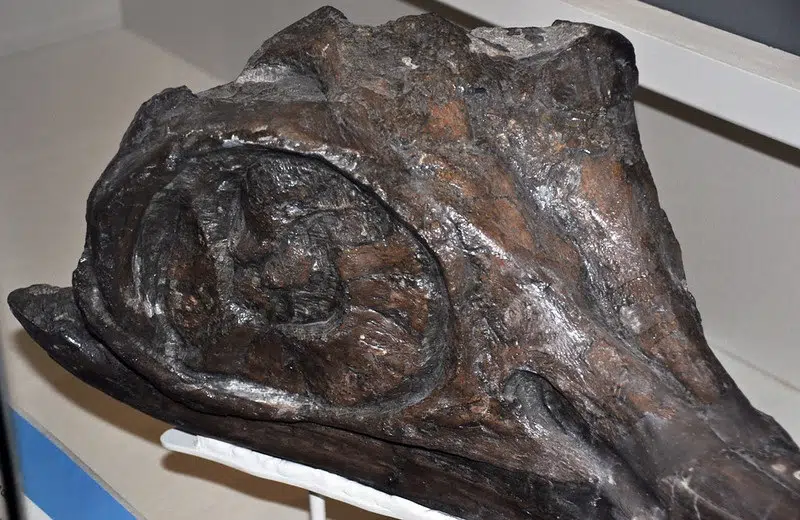
A fossil jawbone found by a British girl and her father on a beach in Somerset, England, belongs to a gigantic marine reptile dating back to 202 million years ago that appears to have been among the largest animals ever on Earth.
Researchers said the bone, called a surangular, was from a type of ocean-going reptile called an ichthyosaur.
Based on its dimensions compared to the same bone in closely related ichthyosaurs, the researchers estimated that the Triassic Period creature, which they named Ichthyotitan severnensis, was between 22 and 26 meters long.
Welcome to the world Ichthyotitan. Roughly the size of a blue whale, perhaps the largest marine reptile ever known.
Art by @SergeyAtrox1 pic.twitter.com/sqWv6hmU0C
— Taylor McCoy 🦖 (@TM9380) April 17, 2024
Marine reptile would have matched large whales
That would make it perhaps the largest-known marine reptile and would rival some of the largest baleen whales alive today. The blue whale, considered the largest animal ever on the planet, can reach about 30 meters long.
Marine reptiles ruled the world’s oceans when dinosaurs dominated the land. Ichthyosaurs, which evolved from terrestrial ancestors and prospered for about 160 million years before disappearing roughly 90 million years ago, came in various sizes and shapes, eating fish, squid relatives and other marine reptiles and giving birth to live young.
Scientists identify what may be the largest known marine reptile https://t.co/bqG3KF81MH pic.twitter.com/G6FB9juTFd
— The Independent (@Independent) April 17, 2024
Ichthyotitan is known only from two jawbones, the one found by Ruby Reynolds and her father Justin Reynolds in 2020 at Blue Anchor, Somerset, and another from a different Ichthyotitan individual found in 2016, along the Somerset coast at Lilstock.
“It is quite remarkable to think that gigantic, blue whale-sized ichthyosaurs were swimming in the oceans around the time that dinosaurs were walking on land in what is now the UK during the Triassic Period,” paleontologist Dean Lomax said, according to Reuters.
Ruby Reynolds, who was 11 at the time and is now 15, was fossil hunting on the beach with her father when they spotted a piece of the surangular. Ruby continued to search the area and found a second piece — much larger than the first — partly buried in a mud slope. They subsequently contacted Dr Lomax, an ichthyosaur expert, and additional sections of the bone were unearthed.
“It has been an amazing, enlightening and fun experience to work with these experts, and we are proud to be part of the team and co-authors of a scientific paper which names a new species and genus,” Justin Reynolds added, Reuters reports.
Ichthyotitan was a member of a family of giant ichthyosaurs called shastasauridae, and lived 13 million years later than any of the others known to date, suggesting these behemoths survived until a global mass extinction event that doomed numerous types of animals about 201 million years ago at the end of the Triassic.
No fossils of the rest of Ichthyotitan’s skeleton have been discovered, but the researchers have been able to discern its appearance based on other members of its family including Shonisaurus from British Columbia, Canada.
The surangular is a long, curved bone at the top of the lower jaw, just behind the teeth, present in nearly every vertebrate living or extinct, apart from mammals. Muscles attached to this bone generate bite force.
Related: Ancient Fossil Unveils ‘Dragon’ From 240 Million Years Ago
See all the latest news from Greece and the world at Greekreporter.com. Contact our newsroom to report an update or send your story, photos and videos. Follow GR on Google News and subscribe here to our daily email!



